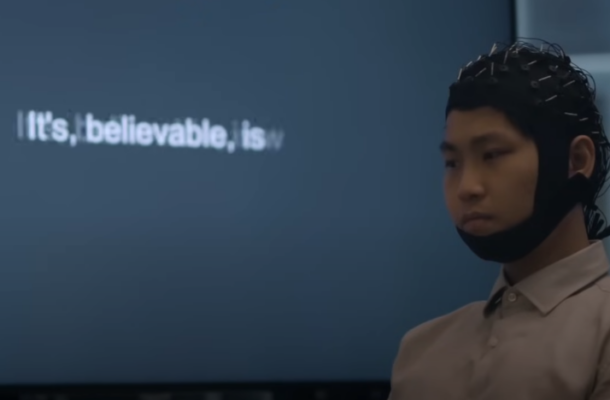Discover the groundbreaking technology developed by researchers at the University of Technology Sydney – a portable system decoding thoughts into text, offering hope for those with speech impairments and unlocking new possibilities in human-machine communication.
Introduction: In a remarkable leap forward in the realm of artificial intelligence, scientists at the Center for Artificial Intelligence at the University of Technology Sydney have unveiled a pioneering non-invasive system. This revolutionary technology reads thoughts and seamlessly translates them into text, holding promise for individuals facing speech impediments due to injury or illness. Moreover, it marks a significant stride towards enhancing communication between humans and machines, potentially shaping the future of assistive technologies.
Deciphering Thoughts: The Birth of Neurotech Advancements
In their quest to redefine the boundaries of neural decoding, the Australian researchers introduced a cutting-edge technology designed to decode thoughts without invasive measures. Traditional methods often required the insertion of electrodes into the brain, an expensive and intrusive procedure. However, this new approach utilizes a portable electroencephalogram (EEG) cap to record electrical brain activity. The cap, worn by participants during testing, receives brain signals through the skull rather than invasive implants, heralding a breakthrough in non-invasive neurotech.
https://youtu.be/crJst7Yfzj4
DeWave: The AI Powering Mind-to-Text Translation
At the heart of this innovation lies an artificial intelligence marvel named DeWave. Developed specifically for this groundbreaking experiment, DeWave employs discrete coding techniques during the brain-to-text translation process. This intricate method, according to the researchers, opens up new horizons in both neuroscience and artificial intelligence. By translating electrical signals from the brain into coherent words and sentences, DeWave has showcased its potential to revolutionize communication for those grappling with speech limitations.
Overcoming Challenges: Noise, Verbs, and the Path Forward
During rigorous testing, participants donned the EEG cap, silently reading passages of text while DeWave processed their brain signals. The results revealed a remarkable ability to link verbs, albeit with a slightly better performance than nouns. Despite challenges and a 40 percent accuracy rate, the researchers remain optimistic about the model's potential. The focus now shifts to refining and advancing the model to enhance accuracy levels, paving the way for a more precise and effective mind-to-text translation.
Shaping the Future: From Speech Impairments to Human-Machine Symbiosis
This groundbreaking development not only holds promise for individuals with speech impairments caused by conditions like stroke or paralysis but also introduces a transformative era in human-machine interaction. Envision a future where seamless communication between humans and machines facilitates the operation of bionic arms and robots, bringing us closer to a world where thoughts are effortlessly translated into actions.
In conclusion, the fusion of neurotech and artificial intelligence unveiled by the University of Technology Sydney researchers promises a future where communication barriers are dismantled, offering newfound hope and possibilities for a diverse range of individuals.
https://youtu.be/hs8hjdoSKNQ


Comments